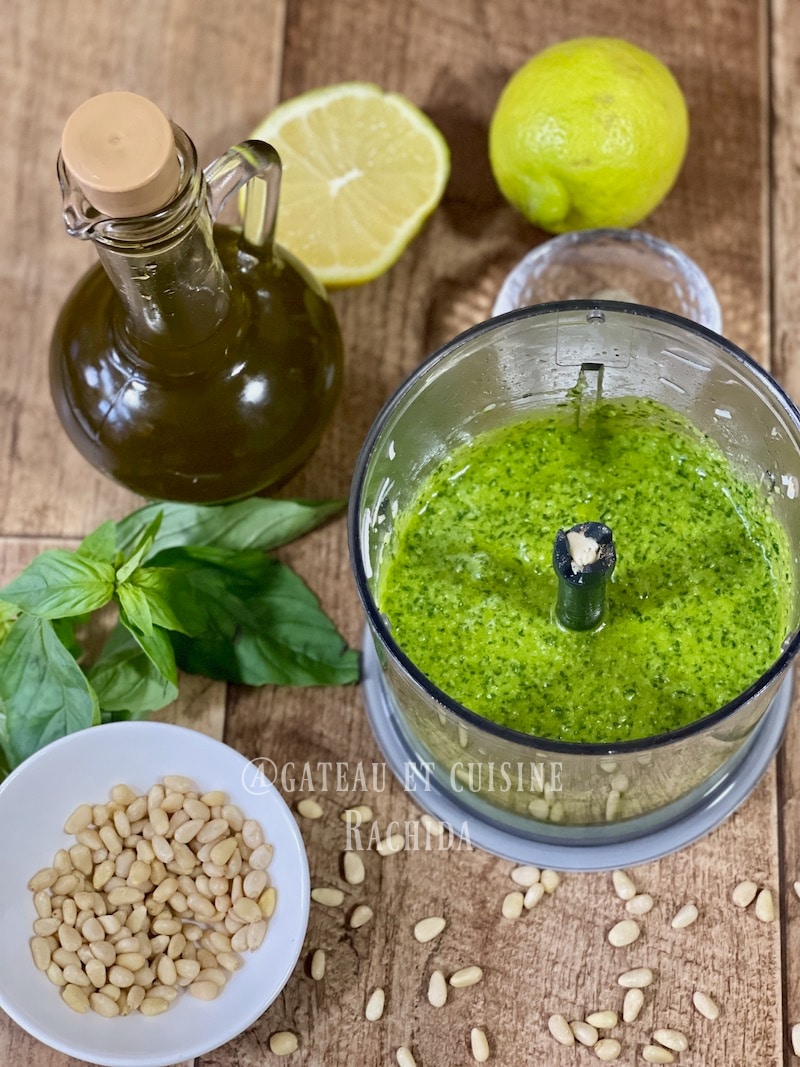
Basil pesto is a typically Italian recipe. This little green sauce, more or less liquid, is composed mainly of fresh basil. Other ingredients include garlic, pine nuts, olive oil, lemon juice and Parmesan cheese.
Easy to prepare, it adds a fragrant, characterful touch to a multitude of dishes. In fact, it’s one of the preparations I use most often in my cooking, which is hardly surprising when you’re bathed in Mediterranean flavors.
With grilled vegetables at a raclette party, it’s a real delight. Mixed with a vinaigrette, it adds zest to all kinds of salads. And for a simple but tasty aperitif, I love to spread it on toast, then add a few slices of avocado, tomato or roasted eggplant. A real concentrate of sunshine on the palate!
I love having little pots of coriander, basil, mint, parsley and rosemary in my window box. If you love to cook and live in the Mediterranean, you can’t help but be a fan of these fresh plants. They add color and flavor to everyday dishes, making each plate a little more alive.
A little chopped parsley livens up a salad, a few sprigs of rosemary are enough to flavour a baked leg of lamb… and a simple plate of pasta becomes delicious with a spoonful of homemade pesto.
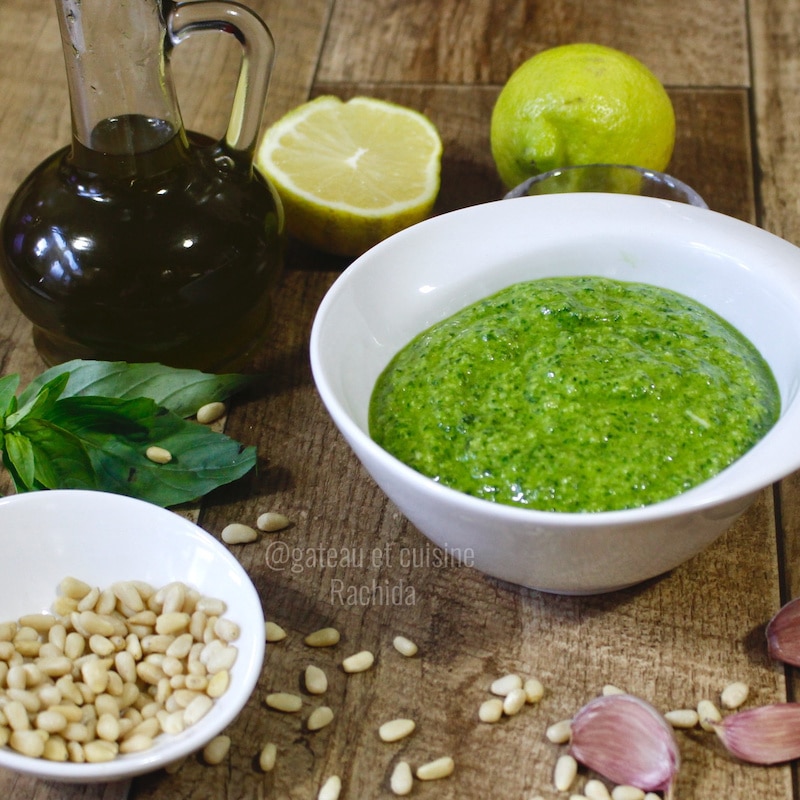
Table of Contents
How to use pesto
As I said in the introduction, pesto sauce goes in just about everything!
In a marinade, it deliciously flavors fish en papillote.
On a pizza, it can be spread in place of tomato sauce before baking, or added as a finishing touch after cooking.
In a creamy sauce, it is a wonderful addition to pasta dishes.
On bruschetta, simply spread on toast with a few vegetables or cheeses.
In verrines, for a fresh and original aperitif.
In an omelette, for a herbaceous, gourmet touch.
And the list goes on…
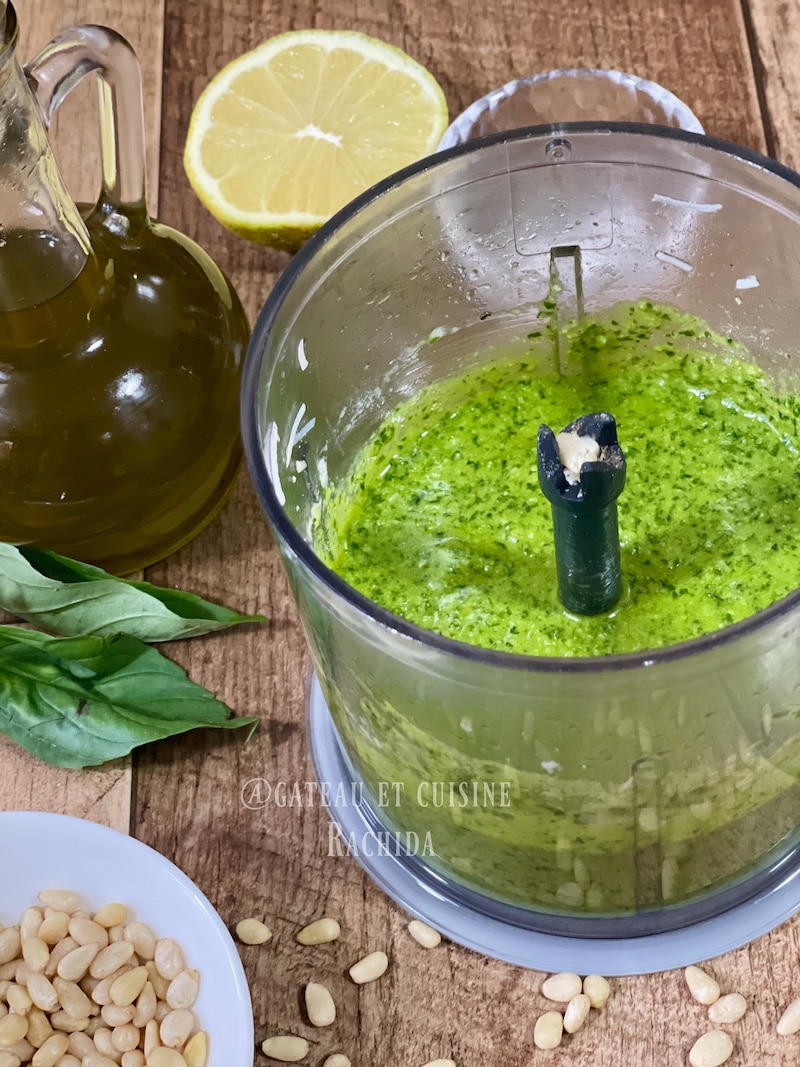
Ingredients:
- 70 g fresh basil leaves
- 50 g grated Parmesan cheese (or Edam as a substitute)
- 40 g pine nuts (or walnuts as an alternative)
- 3 garlic cloves
- 120 ml olive oil (more or less, as needed)
- Salt and pepper, to taste
- Juice of 1/2 lemon

Preparation steps :
Wash the basil and drain well. The leaves must be perfectly dry, with no trace of water.
In the bowl of a food processor, pour in half the olive oil, add the Parmesan, peeled garlic cloves and pine nuts.
Blend until smooth.
Then add the basil leaves, the juice of half a lemon and a drizzle of olive oil.
Mix again thoroughly.
Gradually blend in the remaining olive oil until you reach the desired texture. You can adjust the amount of oil according to whether you prefer a thicker or thinner pesto.
Your basil pesto is ready!
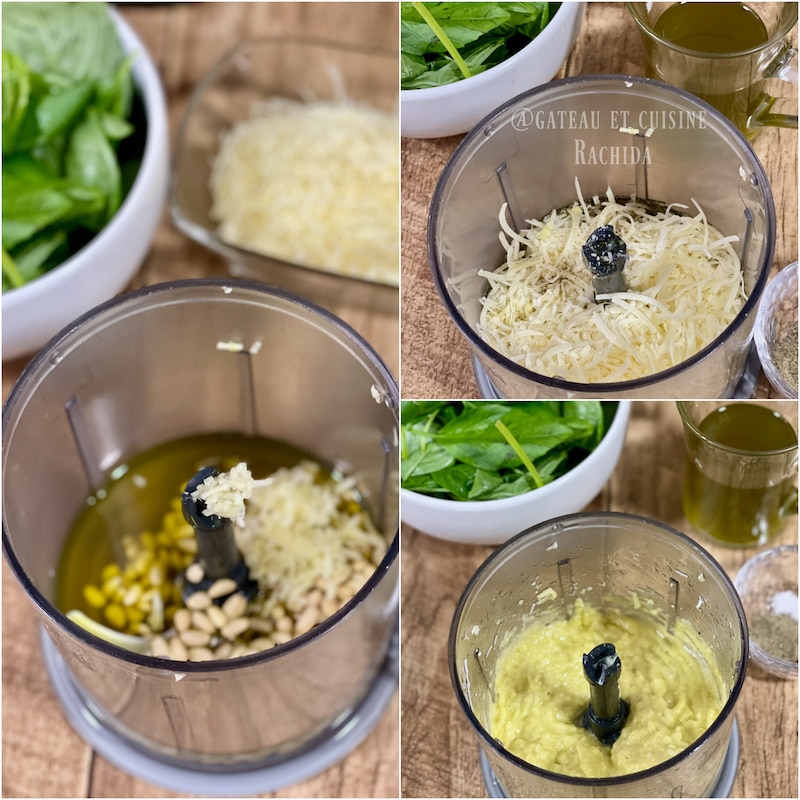
Basil pesto sauce variations :
If you find the taste of basil too strong, you can replace some of it with spinach shoots. This softens the flavor while preserving the pesto’s beautiful green color.
You can also make pesto with other herbs: parsley, arugula or any other green herb you like, depending on what you have on hand.
Pine nuts can be replaced by other oilseeds: walnuts, blanched almonds, unroasted pistachios… all add an interesting touch.
On the cheese side, parmesan and parmigiano reggiano are unmissable classics. Alternatively, you can opt for edam or any other hard cheese.
Admittedly, this is a bit of a departure from the traditional basil pesto, but these variations are just as tasty and offer a variety of pleasures.
How to store homemade pesto?
Once your pesto is ready, transfer it to an airtight jar and store in the fridge for up to a week. To preserve its beautiful green color and prevent oxidation, simply cover with a thin layer of olive oil.
For longer storage, freezing is ideal. Spread the pesto in a thin layer in a freezer bag, then place in the freezer. Once frozen, simply break off the desired quantity: it’s quick and easy.
Another tip: pour it into ice cube moulds. Once the cubes are frozen, remove from the moulds and store in a freezer bag. So you’ll always have ready-to-use portions on hand, for up to 3 months in the freezer.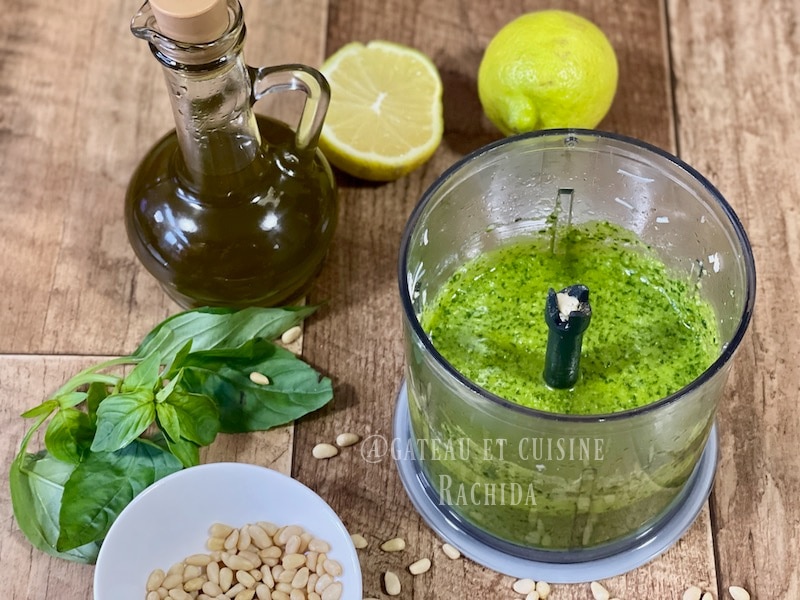
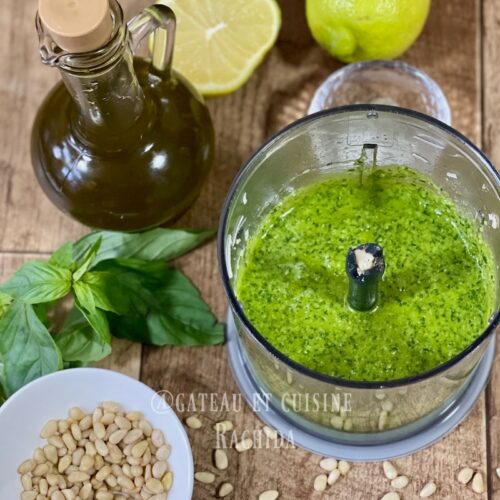
Basil pesto sauce recipe
INGREDIENTS
- 70 g fresh basil leaves
- 50 g grated Parmesan cheese or Edam as a substitute
- 40 g pine nuts or walnuts as an alternative
- 3 garlic cloves
- 120 ml olive oil more or less, as needed
- Salt and pepper to taste
- Juice of 1/2 lemon
PREPARATION
- Wash the basil and drain well. The leaves must be perfectly dry, with no trace of water.
- In the bowl of a food processor, pour in half the olive oil, add the Parmesan, peeled garlic cloves and pine nuts.
- Blend until smooth.
- Then add the basil leaves, the juice of half a lemon and a drizzle of olive oil.
- Mix again thoroughly.
- Gradually blend in the remaining olive oil until you reach the desired texture. You can adjust the amount of oil according to whether you prefer a thicker or thinner pesto.
- Your basil pesto is ready!
